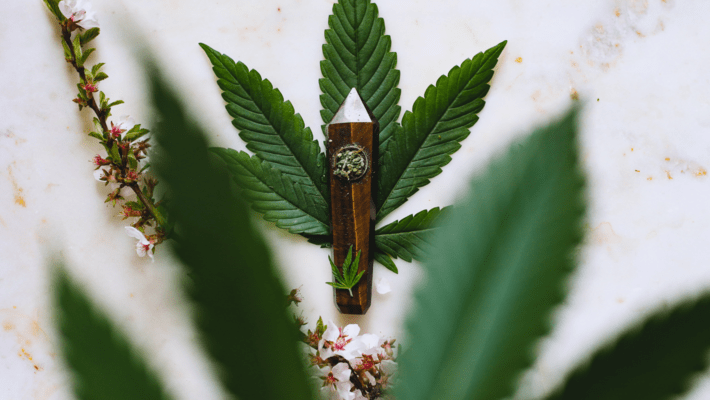
How are THC and CBD Percentages Actually Calculated
Published on 1/8/22
When you're picking up from the dispensary, products should be labeled with how much THC and CBD they contain along with what type of strain they are (sativa, indica, or hybrid). If sativas are usually meant for creative, increased energy highs and indicas are used for full-body, mellow highs, what do the percentages of THC and CBD have to do with the final cannabis product. Do you want to know how to test THC potency and learn how to measure CBD levels? Keep reading to find out.
The Difference Between THC and THCA
 Unsplash
UnsplashWhen we talk about THC (tetrahydrocannabinol), we're usually discussing Delta-9 THC, although there are many different types of THC, including Delta-8 and Delta-10. The most common is Delta-9, a primary cannabinoid found in abundance in most cannabis strains. It is psychoactive, meaning that it causes the "high" associated with marijuana (It is more potent than other types of THC). It is also used for its many medicinal benefits, including managing pain, reducing seizures, and treating many side effects of cancer treatment. (Talk about decarboxylation). What you might not know about THC is that it is has a precursor molecule, THCA.
THCA (tetrahydrocannabinolic acid) is a non-psychoactive cannabinoid found in cannabis. Research shows us that it does have anti-inflammatory properties and neuroprotective benefits, but it won't get you high. THCA to become Delta 9 THC, it must go through decarboxylation that removes the extra carboxyl group through time and/or heat. This is why you don't get high if you eat straight cannabis flower. Even though it won't get you high, you've probably noticed that many labels show the THCA & THC percentages. Let's dive into why.
How THC and THCA Percentages Differ on the Label
You may have noticed that many cannabis labels show both the THC and THCA percentages and that the THCA percentage is much higher. Don't worry, this isn't an indicator that the weed won't get you high. The THCA percentage shown on the label indicates how much of the plant matter is THC once heated (and hence decarbed). The reason you see a much smaller THC percentage along with the larger THCA percentage is because cannabis naturally decarbs over time. So, the label shows how much of the cannabis is already decarbed due to aging. This is a small but important part of measuring THC potency.
How to Test THC Percentage
 Unsplash
UnsplashIt may seem like adding those two percentages together is a surefire way to test THC content and see how much you'll actually consume. However, THC weighs less than THCA. To be specific, THC weighs 87.7% of its original THCA state. So, when a cannabis label states that the percentage of THCA is 20%, you need to subtract 12.3% of that to account for weight loss. Because of this, the total THC percentage can be more accurately calculated using the following equation:
(0.877 x %THCA) + %THC = roughly the total decarbed THC percentage
We say that the equation doesn't consider that not all THCA ends up being consumable THC. Because of that, some companies will take an additional percentage out of the equation to come up with the total. But because there are no industry standards for calculating the final THC percentage, different companies often use different equations.
Of course, some labels just show the total without breaking down the two types of THC. You can safely assume that the total THC amount, in those instances, will be decarbed THC that is psychoactive. The only thing you'd have to account for is that not 100% of THCA is converted into decarbed THC (although that percentage is fairly negligible).
How Much THC and CBD is Absorbed When Smoked
 Unsplash
UnsplashCalculating the total potential THC in any given strain is just one part of what you want to consider. To get the most accurate calculation of how much THC you'll consume (and absorb) when you use cannabis requires taking your consumption method and other specifics into account. When you smoke cannabis it can be heated at many different levels, and the duration and intensity of heat decide how much of the THCA is being converted to THC. Decarboxylation begins occurring around 180 degrees Celsius. Vapes and controlled heating apparatuses can keep temperatures lower, resulting in almost all THCA being converted. Higher levels of heat associated with traditional smoking methods (like a pipe or joint) can burn upward of 1,000 degrees Celsius. At these higher temperatures, THCA is converted into THC and then into CBN and causes the destruction of some terpenes and the degradation of cannabinoids. This means that higher temperatures result in less consumable THC. Cannabis in edibles is often created via lower heating methods, so more THCA is converted, much like vaping.
Do you have a favorite percentage ratio of THC to CBD? Let us know why and what strains you look for in the comments below!
